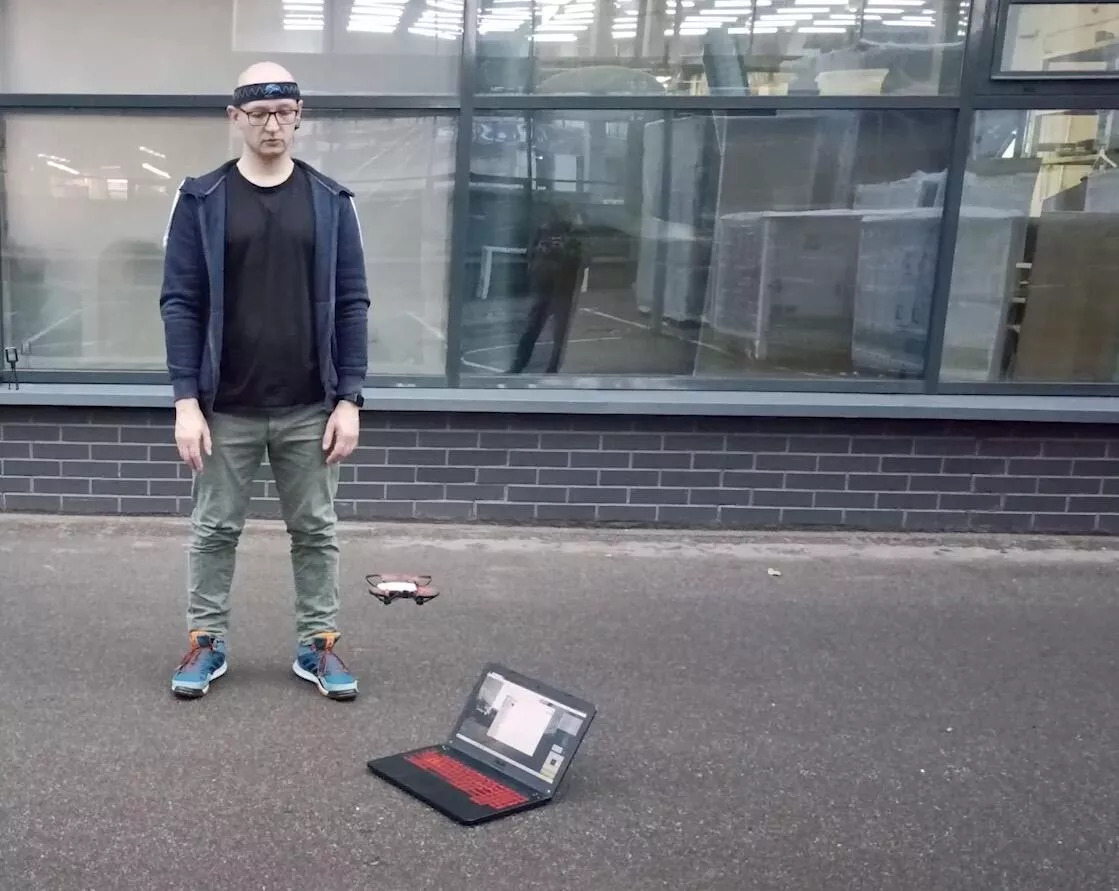A Russian technology and robotics company claims to have been able to control a drone with mere ‘brain impulses’ that do not involve electronic commands. Casually dubbed “thought control,” the technology involves a ‘neural interface’ that reads brain waves, which are converted into electronic commands.
B-21, F-22, F-35: China Claims ‘Busting’ US Stealth Fighters; Experts Shed Light On Chinese Assertions
The development was an academic undertaking by the Neurobotics company to attract more students and investments in robotics sciences and Artificial Intelligence (AI). It is part of a more significant government effort to spur the government-run and domestic robotics technology sector to become self-reliant in drone technology.
This was after Russia’s industrial and technological shortcomings in the UAV sector were exposed in the first few months of the Ukraine war in 2022.
Since then, state-owned and private firms have thrown up a series of low-cost and advanced unmanned aerial vehicles (UAV) for military use, besides a host of remotely piloted aircraft for civilian purposes.
This is amidst regular industry conferences, workshops, exhibitions, interactions with universities and technology students, hackathons, and competitions between engineering students to spur Moscow’s drone sector.
Power Of Thought Drone Control
According to a report in RIA Novosti, the developers of the Neurobotics company first integrated the drone, a quadcopter, with a “neural interface.” Then, the pilot “controlled” the aircraft “using brain impulses.” It also called the phenomenon “the power of thought.” The demonstrative experiment was held under the aegis of the National Technology Initiative (NTI).
“The developers of the Neurobotics company connected the Pioneer Mini drone from the Geoscan company with the NeuroPlay neural interface, which allows pilots to control the quadcopter using brain impulses, that is, the power of thought. This development will be useful when holding drone competitions controlled by a brain-computer interface,” the NTI said.

Pilots can also “benefit” by “improving their concentration skills” and subsequent rapid recovery,” the message says. According to Vladimir Konyshev, General Director of the Neurobotics company and a member of the NTI Neuronet Working Group, neurocontrol of drones is the fundamental system in Science, Technology, Engineering, and Mathematics (STEM) studies.
This is because it is an interdisciplinary field involving neuroscience, mechatronics, aeronautical engineering, software programming, and even sports medicine. Injured athletes, disabled persons, people having undergone amputations, and those being treated with physiotherapy are often the victims of dysfunctional nerves. Some amputees have also received bionic limbs that operate purely on electronic impulses from the brain.
Thus, one of the objectives of neural interface technologies is to improve the functioning of nerves connecting the brain and limbs. A highly sophisticated and niche science, a section of doctors have long believed in its potential to address nervous system-linked medical issues like paralysis and nerve damage.
“Together with Geoscan, we plan to hold competitions in the Russian Federation, and I hope this will quickly reach the international level…Another important feature of this combined technology is the ability to neuro-control complex objects such as drones, which not only improves the concentration and attention of the pilot but also teaches them to cope with stress and control emotions when performing complex operations. This is a vital tool for training operators of critical processes,” Konyshev was quoted further.
General Director of the Geoscan company Alexey Yuretsky, in turn, added that the integration of drones with a neural interface could also allow disabled persons who cannot operate drones physically to participate in drone competitions, making them more inclusive.
No Immediate Military Use Yet
It is not clear if the invention has been proposed for military use. But based on leading Russian Telegram groups discussing robotics and technology, it appears to be a self-funded civilian project with industry-academia collaboration. However, the Russian Ministry of Defense (RuMoD) might express interest later once the technology matures.
This is, however, not the first time that neural interfaces have been used to operate a UAV. A 17-second video by Mirai Innovation shows a large quadcopter on a table being physically connected to a neural interface worn by a person, which takes off and lands briefly.
In the picture of the Russian Neurobotics-Geoscan-NTI experiment, the UAV appears much smaller, and the test is taking place in the open. No visible wire is also seen connecting the neutral interface wrapped around the person’s forehead and the small drone.
- The author can be reached at satamp@gmail.com
- Follow EurAsian Times on Google News